PIARC publications from 2016 - 2019 work cycle
This page presents the reports of the 2016-2019 work cycle of PIARC (World Road Association). They are available in one or more of the three working languages of the Association which are French, English and Spanish and have been published after a meticulous validation and quality control exercise.
They are accessible directly by clicking on the reference in the right column of the table below. This follows the structure of the 2016 - 2019 Strategic Plan.
- Strategic Theme A - Management and Finance
- Strategic Theme B - Access and Mobility
- Strategic Theme C - Safety
- Strategic Theme D - Infrastructure
- Strategic Theme E - Climate Change, Environment and Disasters
- Special Projects
PIARC publishes numerous technical reports, which are reference documents that are widely used in the road and transport sectors. They complement other publications of the Association such as the Routes / Roads magazine, Proceedings of international congresses, Proceedings of international seminars and online Manuals.
These reports are the output of the work of over 1,000 experts during a four-year work cycle. Their involvement and professionalism must be underlined. They are mobilized within Technical Comittees or Task Forces as defined by the Strategic Plan, which structures the activities of the Association and aims to meet the expectations and needs of road administrations and operators and all members of the Association. These reports thus constitute a wealth of information, made available to all. They offer state of the art international best practices on roads and road transport in a context of integrated and sustainable development.
These reports are available free of charge as part of the knowledge sharing and dissemination mission that guides the Association. All language versions are presented simultaneously here, to take into account the reading preferences of each user.
Strategic Theme A - Management and Finance
TC A.1 - Performance of Transport Administrations
-
Framework on Measuring Effectiveness and Efficiency of Transport Administrations - Technical Report
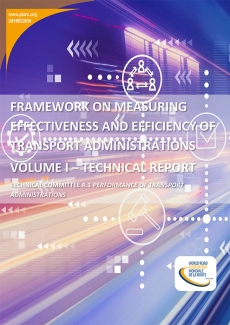
Around the world, governments and the communities that they serve are seeking to better understand if the services delivered by the public sector are meeting long term strategic objectives and the societal outcomes and needs of citizens. Public service organizations, including the transport sector, are under increasing pressure to achieve and demonstrate results. While specific drivers may vary from country to country, or within a country, almost everywhere a strong imperative exists to achieve [...]
-
Evaluating the Transformation of Transport Administrations - Technical Report
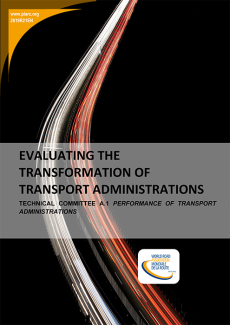
Road and transport administrations across the world face a range of pressures to change the way they plan, organise and deliver services. These pressures vary in nature, for example from changes in the demographic and customer base, the introduction of disruptive technologies, evolving economic, social and environmental regulations, through to the constant political drive to deliver enhanced outcomes with reduced public funding and resources. Transport administrations may have limited direct control [...]
-
Good Governance and Anti-Corruption and Response Measures Including the Development of a Culture of Transparency and Accountability - Technical Report
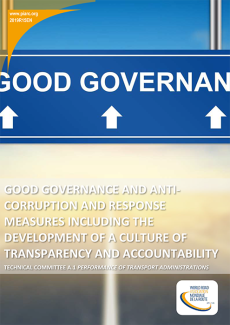
As early as 2003, PIARC Executive Committee considered that fight against corruption was an important topic that deserved to be analyzed by an ad hoc Technical Committee. Since then, this topic has been studied on a regular basis in the different cycles; in particular, a conceptual model (“cycle of integrity”) and associated Integrity Toolkit were produced during the cycle 2008-2011. For the current cycle (2016-2019), in consideration of its terms of reference that requested to “link to external [...]
TC A.2 - Road Transport System Economics and Social Development
-
Journey Time and Travel Reliability - Technical Report
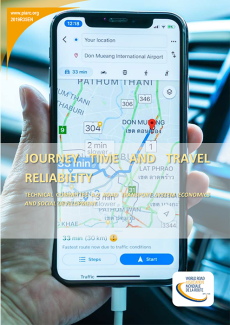
Travel time reliability has been put by all stakeholders in the transport arena at the centre of attention: transport planners, operators and users agree on the need to take actions for more reliable transport systems. Although the framework is clear in terms of the stakeholders’ claims, the theoretical knowledge about reliability is even internationally not exhaustive and the same definition of the term is not intuitive and seems to differ from country to country. As a position-fixing for its [...]
-
Ex-Post Evaluation of Road Projects - Technical Report
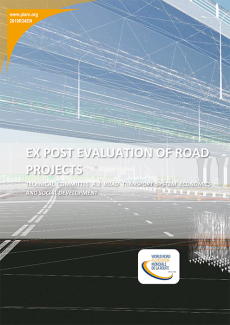
Effective planning and policy development depend, in part, on the availability of suitable models for predicting the effects of project alternatives, and on an understanding of model limitations. A Swedish case study illustrates how the predictive models can be improved by incorporating the lessons from ex post evaluation. The evaluation of the Stockholm experience also found that the modeling traffic and travel times within a static equilibrium framework led to under-prediction of travel time savings, [...]
TC A.3 - Risk Management
-
Project risk catalogue - Technical Report
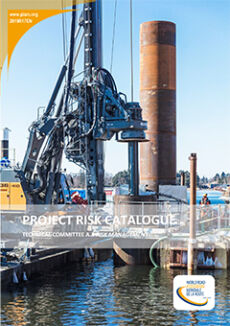
During the PIARC work program for TC A.3 Risk Management 2016-2019, a general, extensive PROJECT RISK CATALOGUE was prepared by WG2 members. To arrive at this catalogue, the working group conducted an effort that involved the documentation of their collective experiences, an extensive literature search, experience from previous cycles, findings from joint international seminars with TC E.1 Adaptation Strategies/Resiliency and E.3. Disaster Management, and experience from local experts from LMIC [...]
-
Evaluation of organizational approaches to risk - Technical Report
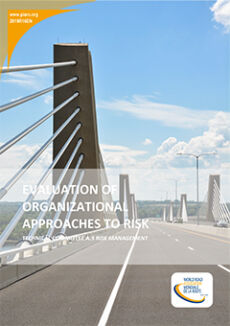
Organizational or Enterprise Risk Management (ERM) is the formal and systematic effort to control uncertainty and variability to an organization's strategic objectives by managing risks at all organizational levels (enterprise, program, project, and activity). Enterprise risk management is an approach to address risks at all levels of the organization. It should not be limited to the application of risk management at the enterprise level. Since organizational success depends on achieving goals [...]
TF A.1 - Innovative Financing
TF A.2 - Coordination between National and Sub-National authorities
-
Principles for Cooperation and Collaboration between National and Local Road Agencies - Technical Report
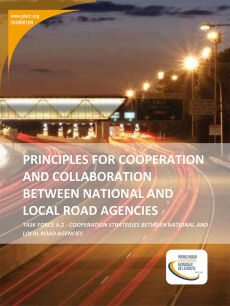
This report analyses general areas of cooperation amongst road authorities at the various levels and the various institutional tools utilised to ensure integration. The need for cooperation between national, federal, provincial, state, local and municipal road agencies is becoming more pronounced. Noting that depending on the specific country one can find State Departments of Transportation, Ministries, transport agencies, metropolitan planning organisations, federal administrations, provincial [...]
Strategic Theme B - Access and Mobility
TC B.1 - Road Network Operations/Intelligent Transportation Systems
-
Big Data For Road Network Operations - Technical Report
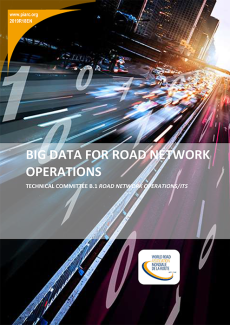
Currently, several technological developments are influencing the day-to-day work of road network operators. Automation, internet of things (IoT), smart systems, mobility services, artificial intelligence and big data are aiming to improve traffic operations and enhance mobility. Among these technologies, big data and big data processing technologies are key enablers for all other technologies. Big data has the potential to influence the whole value chain in the road transport sector. The scope [...]
-
Low Cost ITS - Technical Report
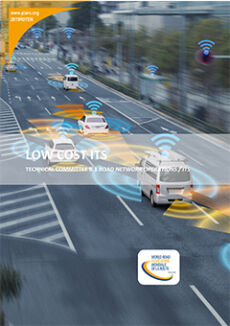
The Low Cost ITS concept was introduced for the first time during PIARC 2012-2015 cycle. The concept described ITS services that were attractive to resource limited or Low- and Middle-Income Countries (LMICs). This was possible because of the recent emergence of inexpensive technological solutions including information systems based on the collection of probe vehicle data or information harvesting from social networks-based software applications. However, the concept was not formally defined. Upon [...]
TC B.2 - Winter Service
-
The Snow and Ice Data Book 2018
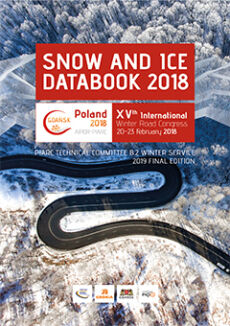
Even though climate change is closely associated with global warming, under the present circumstances it also translates into more extreme weather events. This effect can result in a very mild winter one year followed by a frigid and snowy season the next. Consequently, winter maintenance is very difficult to manage given a context of ever-increasing mobility and declining budgets. We must continue to do our best but with less money. Road network managers must ensure infrastructure remains open [...]
-
International Development of Application Methods of De-icing Chemicals - State of the Art and Best Practice - Technical report
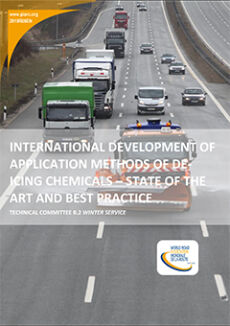
Fighting snow and ice on roads with de-icing chemicals is a major task in winter maintenance. On the main road network usually sodium chloride is used all over the world. Various studies and practical experiences have proven the high efficiency of sodium chloride treatments on traffic safety and national economy. The application methods have been enhanced worldwide in the recent few years. Pre wetted salting and applications of only brine are more and more established on roads and also on bicycle [...]
-
Intra- and Inter-Agency Integration of Winter Maintenance Management: Case Studies
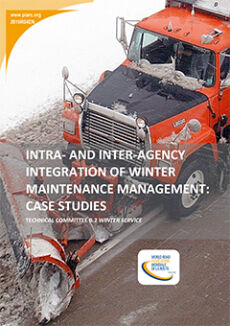
PIARC Technical Committee B.2, "Winter Maintenance," working group B.2.1., "Transportation Management during Winter Events," was tasked with identifying noteworthy examples of cooperation within and between agencies responsible for winter maintenance management. The working group asked PIARC members to submit by email short case studies demonstrating management integration efforts occurring at the intra-agency level (that is, within one agency) or at the inter-agency level (that is, between [...]
TC B.3 - Sustainable Multimodality in Urban Areas
-
Sustainable Multimodality in Urban Regions - Technical Report
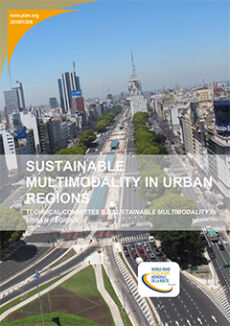
Globalization and specialization have enabled cities to flourish and have led to the concentration of activities and populations, resulting in an increase in urban transport needs and a scarcity of public space. In these urban areas characterized by high population and employment densities, congestion of transport systems is the rule and the sharing of public space is a necessity. Moreover, in a context of scarce public finances, new developments were becoming increasingly difficult to implement, [...]
TC B.4 - Freight
-
National Policies for Multi-Modal Freight Transport and Logistics - Technical Report
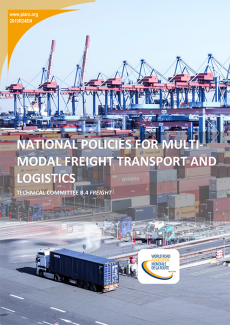
In many countries around the world, national policies for logistics and freight transport are neglected or undervalued compared to passenger mobility and transport. Often, only some elements of freight transport policies are implemented. On the other hand, well-functioning logistics and freight transport systems are crucial for a prosperous economy and thriving society. Therefore, it is important to develop and implement consistent freight transport policies, which aim to optimize the use of all [...]
-
Truck-Traffic on Highways for Sustainable, Safer and Higher Energy Efficient Freight Transport - Technical Report
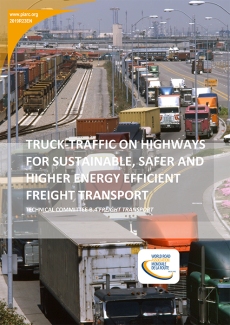
This report presents research and findings on management and operation of truck traffic on highways and motorways for efficient and environmentally friendly, safer and energy efficient freight transport. There are increasing concerns about the issues related to freight transport on highways and motorways, including traffic congestion, lack of capacity, traffic safety, GHG (Green House Gas) emissions, local emissions, noise and vibrations. This report highlights innovative policy measures to cope [...]
-
Good Practices on Multi-Modal Freight Transport Policies and Truck Management on Highways
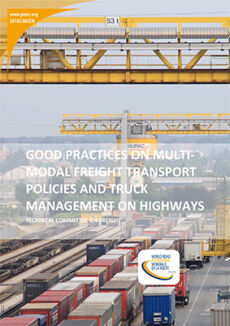
Well-functioning logistics and freight transport systems are crucial for a prosperous economy and a thriving society. The World Road Association/PIARC B4 Freight Technical Committee examines issues surrounding multi-modal and road cargo transport and reviews practices related to truck management and energy-efficient movement of freight. Within the freight committee is the B4.1 Working Group whose strategies are to investigate and document countries' national policies for freight transport and [...]
TF B.1 - Road Design and Infrastructure for Innovative Transport Solutions
-
Connected Vehicles - Challenges and Opportunities for Road Operators - Technical Report
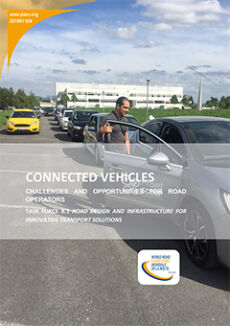
The deployment of Vehicle-to-Infrastructure (V2I) and Vehicle-to-Vehicle (V2V) communication, also known as cooperative intelligent transport systems (C-ITS) is speeding up in many developed countries. For example, Japan has already an operational system at national level, the United States are considering a law mandating dedicated short-range communication in new cars, and the European Union has developed a strategy aiming at massive deployment from 2019. These technologies involve many opportunities [...]
TF B.2 - Automated Vehicles – Challenges and Opportunities for Road Operators and Authorities
-
Automated Vehicles - Challenges and Opportunities for Road Operators and Road Authorities - Technical Report
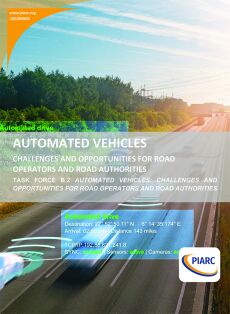
Vehicle Automation – at SAE levels 3, 4 and 5 – is still in a testing phase in most countries. Many tests at level 3 have been performed successfully on open roads without any changes to the road infrastructure and without any observed impacts on congestion. There are various situations which necessitate that a driver takes control of the vehicle – a fall-back solution that is still allowed at level 3, but not at level 4 or 5. It is likely that some support from the infrastructure will be [...]
Strategic Theme C - Safety
TC C.1 - National Road Safety Policies and Programs
-
Implementation of National Safe System Policies: A Challenge - Technical Report
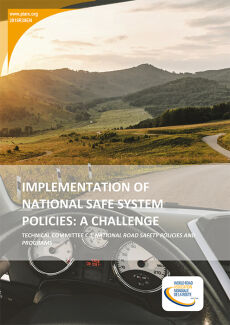
This report provides a contribution to global road safety through a summary of National Safe System Policies and Implementation in relation to the Safe System approach. The report also highlights the steps that low, middle and high-income countries alike can take to accelerate progress towards Safe System outcomes. The report includes a number of key findings from a review and survey of international practice related to national Safe System policies and implementation, which are listed below and [...]
TC C.2 - Design and Operations of Safer Road Infrastructure
-
Road Safety - Catalogue Of Case Studies - Rapport technique
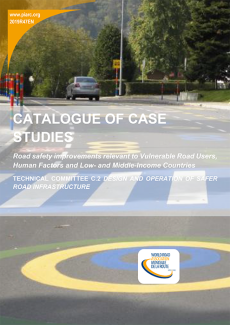
Knowledge comes from the analysis of successes and un-successes. Case Studies collection represents an important step toward the construction of knowledge. PIARC Case Studies Catalogue contains the description of a set of interventions designed, implemented and operated worldwide to improve road safety in three specific fields: Vulnerable Road Users (VRUs), Human Factors (HF) and interventions in Low- and Middle-Income Countries (LMICs) . Some of them are examples that already proved to be effective [...]
-
Review of Global Road Safety Audit Guidelines – With Specific Consideration for Low- and Middle-Income Countries - Technical Report
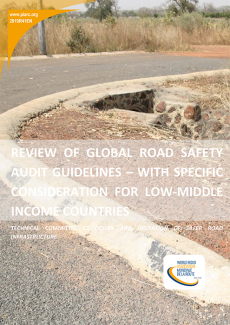
This report has involved a comprehensive review of current Road Safety Audit Manuals and Guidelines from a range of different countries to establish current practices and considers previous international reviews to determine key areas where additional guidance is required, or exemplar practice is well established. Initial consideration was given to the core issues facing many countries regarding implementing a comprehensive audit system. These included: Variability of situations across LMICs [...]
-
Road Safety Evaluations Based on Human Factors Method - Technical Report
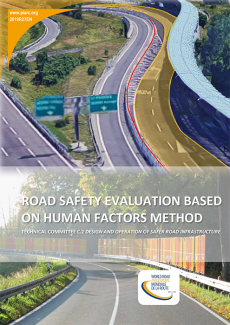
The objective of this report is to instruct responsible road authorities on how to evaluate road safety quality along roads in operation, coupling the well-known reactive approach, based on accident data analysis and high accident concentration sections (or black spots) identification and prioritization, with the pro-active approach, aimed at identifying potentially risky situations before crashes occur. The pro-active approach is a non-accident-based methodology that applies the Human Factors’ [...]
-
Setting Credible Speed Limits - Case Studies Report
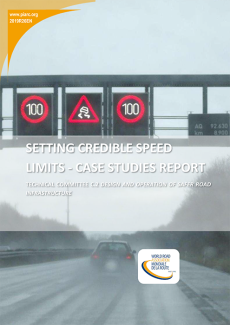
This report of case studies on the topic of speed limits includes a series of implemented countermeasures or experimental proofs of concept to help improve the road safety in a specific location or area. PIARC didn´t work on specific speed issues in the past periods, therefore this report also contains a short theoretical introduction concerning the role of speed in road safety and the importance to set speed limits that are credible for road users. Credible is in general an individual task and [...]
TF C.1 - Infrastructure Security
-
Security of Road Infrastructure - Technical Report
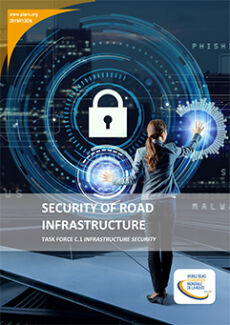
TF C.1 concentrated on "security of infrastructure, transported goods and persons". This decision was based on the experience that, despite the occurrence of incidents taking advantage of the layout and design of road infrastructure to target areas used by pedestrians in order to cause harm, some Road Administrations (hereafter referred to as RAs) are still reluctant to take responsibility for embedding security as business-as-usual in the way they design, construct, operate and maintain their infrastructure. [...]
Strategic Theme D - Infrastructure
TC D.1 - Asset Management
-
General Concept and Requirements for Asset Management Training Courses - Technical Report
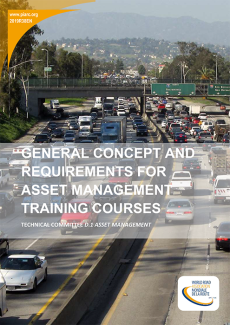
During PIARC work cycle of 2011-2015, the comprehensive Asset Management Manual was developed and presented as a draft version at the 25th World Road Congress 2015 in Seoul, Korea. The first full on-line version of the manual was made available in 2017. Asset Management Manual is available on the PIARC website at the following link: https://road-asset.piarc.org/en PIARC recognizes that technical progress and the dissemination and implementation of modern management techniques and skills are [...]
-
Innovative Approaches to Asset Management - Technical Report
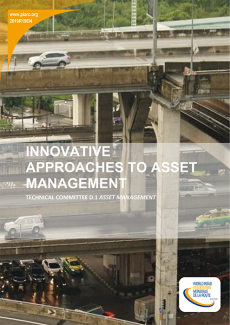
“Asset Management” as defined in ISO standards 55000, aims to enable an organization to obtain value from assets. They offer a structured approach to asset management by focusing on implementation of “risk-based, information-driven, planning and decision-making processes and activities that transform organizational objectives into asset management plans”. In the context of road infrastructure, the organizational objectives are closely aligned with asset management objectives, which are to [...]
TC D.2 - Pavements
-
Reducing the Life Cycle Carbon Footprint of Pavements - Technical Report
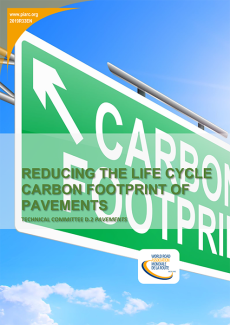
This report reviews innovations reported to reduce the carbon footprint of pavements and contains a critical review of the assessment of carbon footprint of pavements. There are numerous other environmental indicators for road pavements, but these were outside the scope of this report which focuses only on the carbon footprint. The strategic objectives established for the working group were as follows: review field feedback on recent innovations (products, equipment) which contribute [...]
-
Green Paving Solutions and Sustainable Pavement Materials - Technical Report
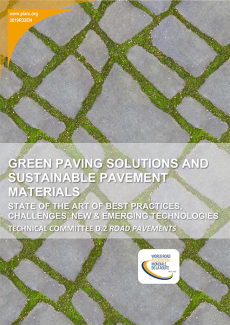
This report summarizes the current state-of-the practice for sustainable pavement techniques and the incentives used to encourage their use. Green paving solutions were identified in addition to identification of barriers to their wider implementation. Information contained in this report is based on a literature review and a questionnaire and survey of 42 representatives from 20 countries across the world. Sustainable pavement techniques can be incorporated into pavements from the pavement design [...]
-
State of the Art in Monitoring Road Condition and Road / Vehicle Interaction - Technical Report
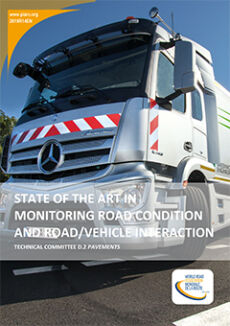
This report is a follow-up on the report "State of the art in monitoring road condition" which was finalised in 2015 (PIARC reference 2016R17EN). The 2015 report summarises the then current state of the art regarding the collection of road condition and road/vehicle interaction data, providing an overview of current practice and emerging technologies. The current report is an update of some chapters due to new findings as a result of recent research. It also discusses technologies in the development [...]
TC D.3 - Bridges
-
Bridge Design Toward Improved Inspection And Maintenance - Technical Report
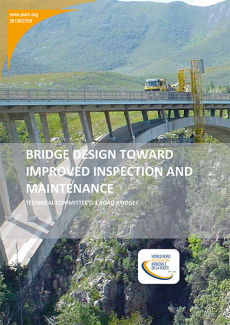
The principle of designing bridges while having in mind the future inspections and maintenance has often been overlooked in the past, when in the design stage greater emphasis was placed on firstly fulfilling just the "initial requirements" of the bridge – mainly structural safety and serviceability – and secondly minimizing the initial capital cost. This approach has, in many instances, resulted in costly future maintenance which far exceeded the initial capital savings of not considering the [...]
-
Technical and Economic Considerations of Bridge Rehabilitation Methods - Technical Report
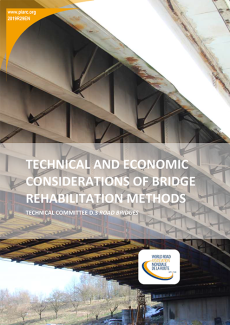
Bridge owners who have to manage their bridge stock are concerned with bridge deficiencies. The main concerns are the degradation of bridge elements due to ageing, accident, and other factors. This is evaluated by the bridge condition index. But bridge owners also have to manage the evolution in the characteristics of the bridge: the original design may no longer be appropriate (number of lanes, load capacity, flooding frequencies, standards and other characteristics). In this case there is a need [...]
-
Damage and Deterioration Assessment Decision-Making for Highway Bridge Safety - Technical Report
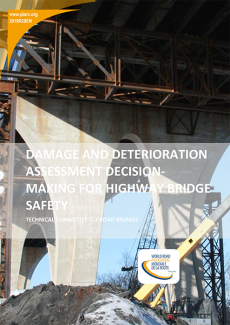
Bridge owners in most countries routinely assess bridge damage and deterioration to ensure the safety of the traveling public and appropriately manage the service life of a bridge. While in service, bridge owners discover damage or deterioration under two main circumstances. Firstly, damage or deterioration resulting over longer periods of time, and secondly damage or deterioration appearing instantaneously. “Triggers” or causes of this damage or deterioration include: environmental impacts, [...]
-
Inspections and Damage Assessment Techniques - Case Studies
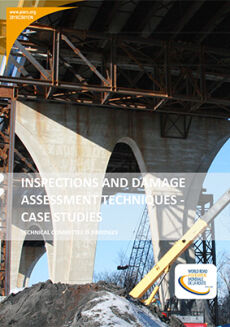
The PIARC TC D.3 Bridges Technical Committee is publishing a worldwide compilation of case studies as examples for bridge owners in making critical decisions to ensure the safety of the traveling public during a bridge incident caused by damage and deterioration. This case study compilation has 28 worldwide case studies received from 15 unique countries. These case studies provide examples of incidents where owners discovered damage or deterioration under two main circumstances. Firstly, damage [...]
TC D.4 - Rural Roads and Earthworks
-
Road Infrastructure And Transportation Security - A PIARC Technical Report
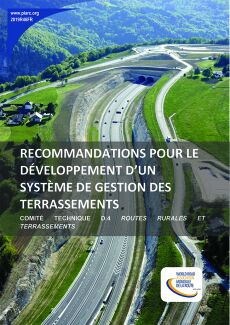
The management of road assets is becoming increasingly important in the current global context. Design, construction and maintenance are being adapted to improve and guarantee the durability of structures. The resilience of infrastructure to climate change is being sought. The priority objective is to avoid disorders that could jeopardise the operation and safety of road infrastructure. Technical reports on this subject have already been published on the PIARC website, and a Road Management Manual [...]
-
Earthworks Manual - Genesis and Preamble
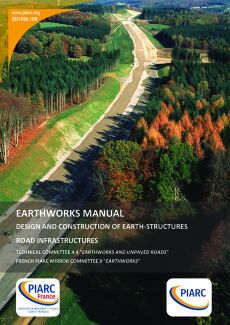
PREFACES by Guy RAOUL, Coordinator of the Earthworks Manual. The Earthworks Manual project was launched in 2012 by the Executive Committee of the PIARC Strategic Plan, which entrusted its preparation to Technical Committee 4.4 "Earthworks and unpaved roads". The Earthworks Manual is an important technical document for the profession and stakeholders in the field of activity. It is eagerly awaited by the experts from many countries who have contributed to its content. The Manual is organised [...]
-
Preserve Earthworks and Rural Roads from the Impact of Climate Changes - Technical Report
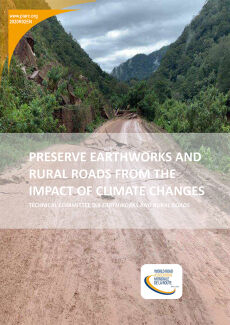
This report puts together good practices on the various regional approaches to the impacts of climate change on roads and little hydraulic works. The subject has already been addressed during previous PIARC cycles but more on the general geotechnical aspect. It includes the definition of the climatic parameters that had to be taken into account, the definition of a rural roads and the terminology of the structure of a road (going from embankments, slopes to the pavement layers). The report covers: [...]
-
Review of Practices Using Marginal and Secondary Materials in Rural and Industrial Areas - Technical Report
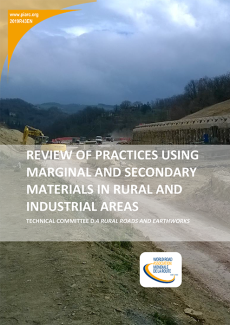
The use of existing materials in road embankments is an essential issue within the Sustainable Development policies, which have been promoted worldwide for many years. In the World Road Association (PIARC) this subject has been investigated by different Technical Committees over the last 20 years. The optimization of earthwork projects is an obvious issue related to this concern, with important benefits (no spoil disposal or supply of natural noble materials can lead to a strong pollution reduction). [...]
TC D.5 - Road Tunnels Operations
-
Large Underground Interconnected Infrastructure - Technical Report
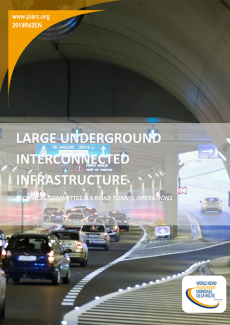
This report is a continuation of the previous one published in 2016: “Road tunnels: complex underground road networks” (2016R19EN). Its objective is twofold: extend the panel of networks investigated, both geographically and in terms of their complexity and diversity, analyse in a much more thorough manner the particularities of this network nature, including: the geometry and impact of all the constraints related to the interchange points and connections, ventilation facilities: [...]
-
General Principles to Improve Accessibility for Persons with Reduced Mobility in Road Tunnels - Technical Report
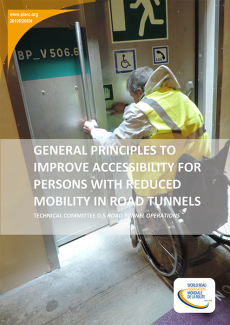
The report provides the general principles that apply when making allowances for persons with reduced mobility in road tunnels. The means of facilitating their ability to raise the alarm, and to evacuate in critical situations, are examined. Facilities and examples from the following countries are provided: France, Slovak Republic, Denmark, Australia, the Netherlands, Germany, Austria, United Kingdom, Italy, Czech Republic, Sweden and Spain. The report is aimed at tunnel owners, designers and safety [...]
-
Introduction to the RAMS Concept for Road Tunnel Operation - Technical Report
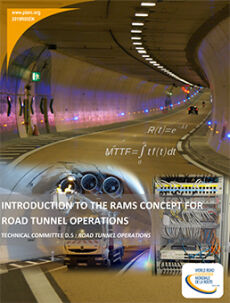
Road tunnel operators are increasingly aiming to adopt a sustainable approach to road tunnel operation whenever possible. They are thus starting to look into ways of optimising the lifecycle performance of systems and equipment, whilst at the same time guaranteeing the required level of safety. One possible means of achieving this is based on monitoring the Reliability, Availability, Maintainability and Safety (RAMS) of systems/equipment, based on pre-defined requirements (these aspects are clearly [...]
-
Prevention and Mitigation of Tunnel-Related Collisions - Technical Report
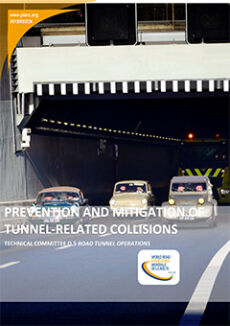
Because a road tunnel is an enclosed space, many tunnel safety measures are rightfully aimed at controlling the risks of fires and dangerous goods. However, practice generally shows that most injuries and fatalities in tunnels are actually related to traffic incidents that could also happen on the open road. This means that measures to assure traffic safety are also very important. Usually, several causes contribute to a specific collision occurring in a tunnel, or in its direct vicinity. Not [...]
-
Road Tunnels: Vehicle Emissions and Air Demand for Ventilation - Technical report
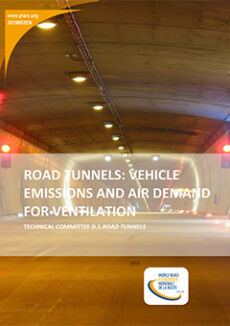
The design of a road tunnel ventilation system must consider fresh-air demand for maintaining in-tunnel air quality during normal and congested traffic operations and the control of smoke and hot gases in case of fire. The ventilation capacity to manage a fire incident frequently drives the ventilation sizing in highway and non-urban tunnels. Nevertheless, the fresh-air requirement for dilution during normal and congested operation, or special environmental constraints, can be dominant in tunnels [...]
Regional Group PIARC/AGEPAR
-
Methodological Document for the Establishment of a National Catalogue and Pavement Design Guide - Technical Report
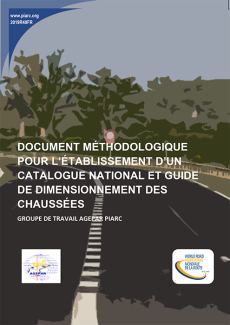
Following the critical review carried out by a joint PIARC/AGEPAR working group, of the 1984 edition of the Practical Guide to Pavement Design for Tropical Countries, produced by CEBTP, PIARC and AGEPAR approved the extension of this work by producing a methodological document for road administrations in French-speaking sub-Saharan African countries that are considering the development of a catalogue of new pavement structures. The Catalogue and design guide are two complementary documents: the [...]
-
Contribution to the improvement of the general guidelines for the development, construction / reconstruction, rehabilitation and maintenance of the Trans-African Highway network - (Annex II) (only in French) - Technical Report
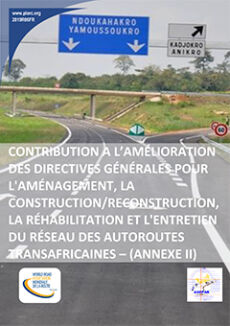
This report is a review, for the purpose of improvement, of Annex II entitled "General Guidelines for the Planning, Construction/Reconstruction, Rehabilitation and Maintenance of the Transfrician Highway Network" of the African Union Intergovernmental Agreement for the Harmonization of Norms and Standards on the Trans-African Highway Network. To this end, the following specific objectives have been set: Examine the conformity of the standards contained in the document in comparison with the [...]
-
Review of the Practical Guide to Pavement Design for Tropical Countries (in French only) - Technical Report
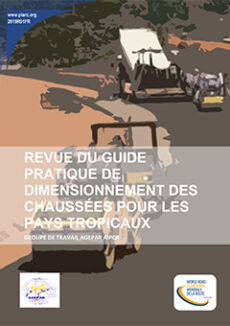
The Practical Guide to Pavement Design for Tropical Countries, published in 1984 by CEBTP, is still a document to which reference is often made in French-speaking African countries. Over the past thirty-five years, major developments have taken place in the pavement sector, particularly in the formulation of pavement materials and the design of pavement layers, while African countries are experiencing strong growth in heavy goods vehicle traffic, requiring the widespread use of pavements on the [...]
Strategic Theme E - Climate Change, Environment and Disasters
TC E.1 - Adaptation Strategies/Resiliency
-
Refinement of PIARC’s International Climate Change Adaptation Framework for Road Infrastructure - Technical Report
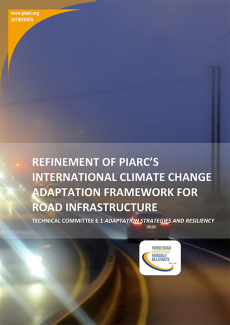
Climate change will have significant impacts on the design, construction, maintenance and operation of global road infrastructure. IPCC projections estimate that the Earth will become warmer, some regions will become wetter overall and some will become drier, sea levels will rise and storm surge height will increase, snow cover and extent of sea ice will reduce, and the frequency and severity of extreme weather events will increase. This in turn results in significant global and regional challenges [...]
-
Adaptation Methodologies and Strategies to Increase the Resilience of Roads to Climate Change - Technical Report
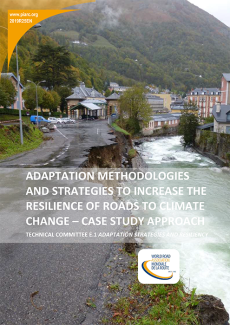
Climate Change is anticipated to have a significant impact on the design, construction, maintenance and operation of global road infrastructure. The IPCC Climate change projections indicate that the earth will become warmer, some regions will become wetter and some will become drier, sea levels will rise and storm surge height will increase, snow cover and extent of sea ice will reduce, and the frequency and severity of extreme weather events will increase. This in turn will result in significant [...]
TC E.2 - Environment Considerations in Road Projects and Operations
-
Traffic Noise – Best Practice Guide - Technical Report
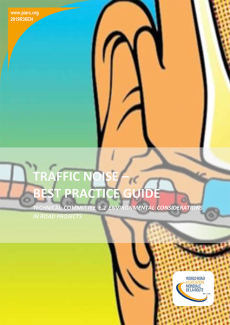
In recent years, knowledge about the health effects of traffic noise has grown substantially. Many studies have found that long-term exposure to traffic noise is associated with various health impacts such as sleep disturbance, cardiovascular disease and depression. While there remain knowledge gaps concerning the risk for particular noise profiles, there is sufficient evidence to suggest that a large proportion of people living within major urban centres is at risk due to excessive noise level [...]
-
Best Practice Guide to Air Quality in Relation to Road Operations - Technical Report
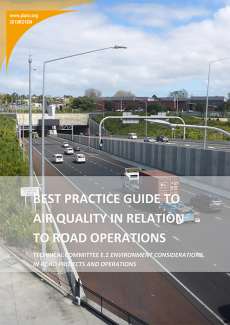
Air pollution linked to road transport has received significant political, media and public attention since the mid 2010s. However, despite improvements in vehicle efficiencies over past decades, emissions from vehicles still contribute significantly to concentrations of air pollutants above standards in many cities around the world. The European Environmental Agency noted that: Road transport remains an important source of some of the most harmful air pollutants. In particular, road transport [...]
TC E.3 - Disaster Management
-
Disaster Management and Recovery Techniques for Road Administrators - Technical Report
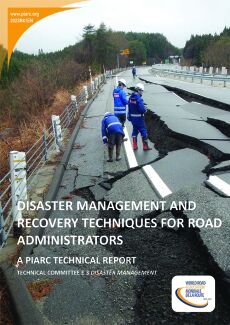
Road networks are one of the most important infrastructure elements that support all kinds of socio-economic activities. In the case of disasters, the role of a road network is more crucial. The purpose of road disaster management is to increase resilience of road networks, effectively and efficiently. Resilience of road networks include not only resilience of the network itself (e.g., planning and construction of alternative road network or alternative transportation) but resilience of road facilities [...]
-
Disaster Information Management for Road Administrators - Technical Report
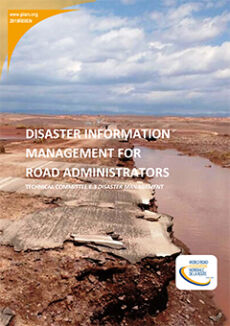
Countries that experience disasters acquire unique disaster management knowledge and develop tailored countermeasure technologies based on their experiences. As societies diversify, damage caused by disasters changes as society changes. Therefore, the type of technology necessary to manage disasters in each country needs to continually adapt as populations grow and society changes. Most disaster management technologies have been developed to respond to the emergency management phase. Previous disaster [...]
Special Projects
-
Positive Energy Roads
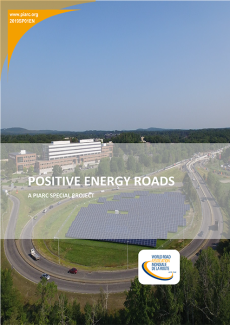
Transport infrastructure, and particularly road infrastructure, is critical to the economic growth of countries and as such attracts significant investment. The social and economic benefits of providing road infrastructure are well documented, but it is increasingly being recognised that the processes by which the infrastructure is designed, constructed, maintained and operated also need to minimise negative impacts such as pollution and greenhouse gas emissions. A key challenge for road transport [...]
-
Electric road systems: a solution for the future?
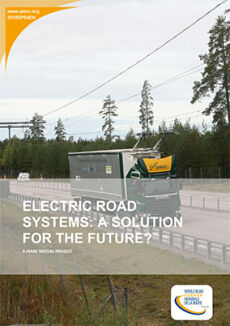
It is looking increasing likely that electric vehicles will play a major role in the future of road transport. While commercial electric vehicles exist their uptake has been limited due to high purchase costs, limited battery range, and a lack of charging convenience. Furthermore, while developments are underway, electric and hybrid drive trains are yet to be efficiently integrated with heavy goods vehicles (HGVs). A novel way to overcome such challenges are Electric Road Systems; a branch of technologies [...]
-
The Use of Unmanned Aerial Systems for Road Infrastructure
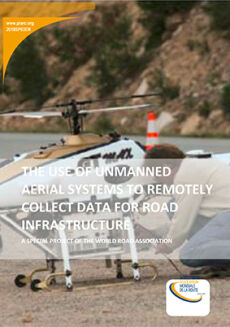
From Canada to Tanzania, transportation agencies are using unmanned aerial systems (UASs), also known as drones, to collect data, design and construct road infrastructure, inspect bridges, monitor roads for avalanche and mudslide dangers, identify flood damage risks in urban areas, reconstruct crash scenes, and monitor traffic and road conditions. Public agencies, under pressure to reduce costs and to be adaptable, are turning to drones as one means of improving operations and cutting costs. Many [...]
-
PIARC Databook of Roads and Road Transport (2014-2018)
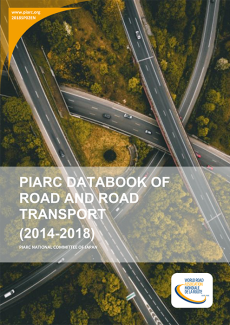
Currently road administrations of many countries face austerities and have to tackle some difficult issues: investing on extension of road network, maintenance and rehabilitation of existing aged roads, prompt recovery of road operation from the damage caused by large-scale disasters, and creation of safe road space. They are requested to assess the importance of political measures and implement them adequately as well as effectively while carefully reviewing the present situation. Then it is critical [...]
-
Investigating Unpredicted Infrastructure Failure
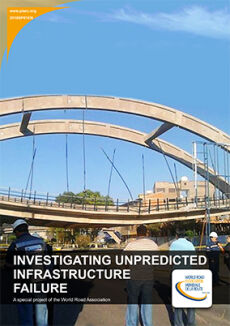
This report is an outcome of PIARC mechanism for Special Projects, which is PIARC instrument to respond quickly to emerging issues for PIARC member countries. This report provides a review of 15 Unpredicted Infrastructure Failure (UIF) case studies that have been collated from around the world. For the purposes of the report UIF is defined as: instances where failure1 occurs on an asset that is considered in good condition and is well maintained The case study data from our interviews and [...]